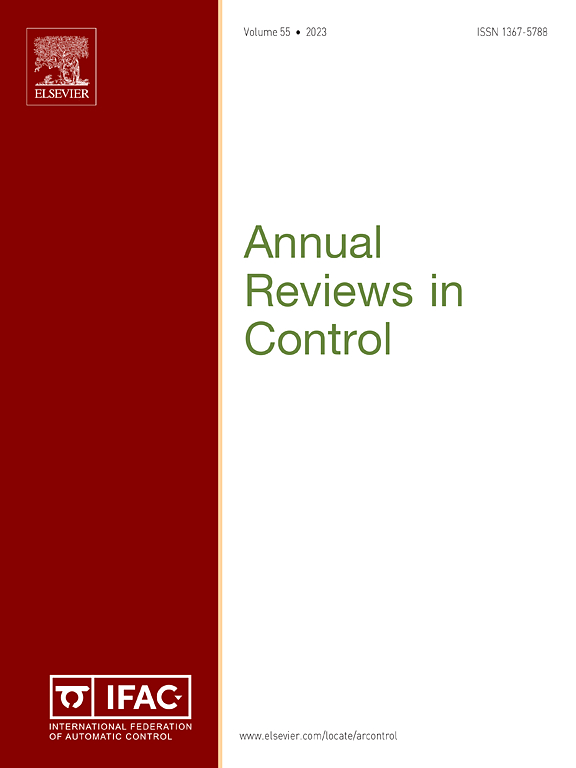Distributed design of ultra large-scale control systems: Progress, Challenges, and Prospects
IF 10.7
2区 计算机科学
Q1 AUTOMATION & CONTROL SYSTEMS
引用次数: 0
Abstract
The transition from large centralized complex control systems to distributed configurations that rely on a network of a very large number of interconnected simpler subsystems is ongoing and inevitable in many applications. It is attributed to the quest for resilience, flexibility, and scalability in a multitude of engineering fields with far-reaching societal impact. Although many design methods for distributed and decentralized control systems are available, most of them rely on a centralized design procedure requiring some form of global information of the whole system. Clearly, beyond a certain scale of the network, these centralized design procedures for distributed controllers are no longer feasible and we refer to the corresponding systems as ultra large-scale systems (ULSS). For these ULSS, design algorithms are needed that are distributed themselves among the subsystems and are subject to stringent requirements regarding communication, computation, and memory usage of each subsystem. In this paper, a set of requirements is provided that assures a feasible real-time implementation of all phases of a control solution on an ultra large scale. State-of-the-art approaches are reviewed in the light of these requirements and the challenges hampering the development of befitting control algorithms are pinpointed. Comparing the challenges with the current progress leads to the identification and motivation of promising research directions.
超大规模控制系统的分布式设计:进展、挑战与展望
在许多应用中,从大型集中式复杂控制系统到依赖于大量相互连接的简单子系统的网络的分布式配置的转变正在进行并且是不可避免的。这是由于对具有深远社会影响的众多工程领域的弹性,灵活性和可扩展性的追求。虽然有许多分布式和分散控制系统的设计方法,但大多数都依赖于需要整个系统的某种形式的全局信息的集中设计过程。显然,超过一定的网络规模,这些分布式控制器的集中设计程序就不再可行了,我们将相应的系统称为超大规模系统(ULSS)。对于这些ULSS,需要设计算法,这些算法本身分布在子系统之间,并且对每个子系统的通信、计算和内存使用都有严格的要求。在本文中,提供了一组要求,以确保在超大规模的控制解决方案的所有阶段都是可行的实时实现。根据这些要求,对最先进的方法进行了审查,并指出了阻碍适当控制算法发展的挑战。将挑战与当前的进展进行比较,可以识别和激励有前途的研究方向。
本文章由计算机程序翻译,如有差异,请以英文原文为准。
求助全文
约1分钟内获得全文
求助全文
来源期刊

Annual Reviews in Control
工程技术-自动化与控制系统
CiteScore
19.00
自引率
2.10%
发文量
53
审稿时长
36 days
期刊介绍:
The field of Control is changing very fast now with technology-driven “societal grand challenges” and with the deployment of new digital technologies. The aim of Annual Reviews in Control is to provide comprehensive and visionary views of the field of Control, by publishing the following types of review articles:
Survey Article: Review papers on main methodologies or technical advances adding considerable technical value to the state of the art. Note that papers which purely rely on mechanistic searches and lack comprehensive analysis providing a clear contribution to the field will be rejected.
Vision Article: Cutting-edge and emerging topics with visionary perspective on the future of the field or how it will bridge multiple disciplines, and
Tutorial research Article: Fundamental guides for future studies.
 求助内容:
求助内容: 应助结果提醒方式:
应助结果提醒方式:


